- Get link
- X
- Other Apps
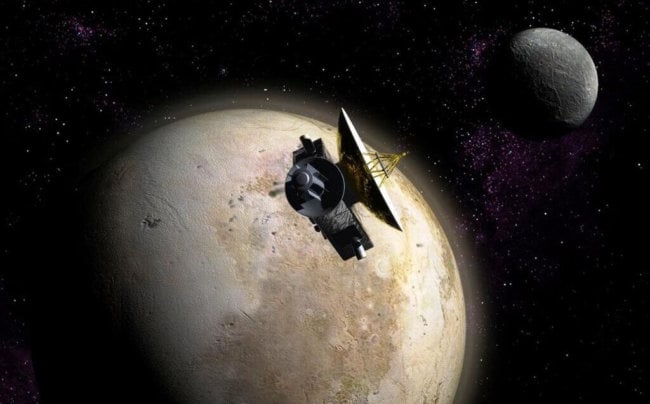
The latest photos of Pluto, transmitted by NASA's space probe, struck scientists with not only breathtaking views of ice mountains, nitrogen glaciers and the atmospheric haze of a dwarf planet, but also strangely familiar arctic landscapes.

Just 15 minutes after the closest approach to Pluto, the New Horizons turned and looked back toward the Sun. The result was this photograph of icy mountains and ice plains covered in fog. On the right in the photo are the Sputnik plains, on the left - mountains up to 3,500 meters high. The photograph was taken from a distance of 18 thousand kilometers from the surface of Pluto and covers 1,250 kilometers in width.
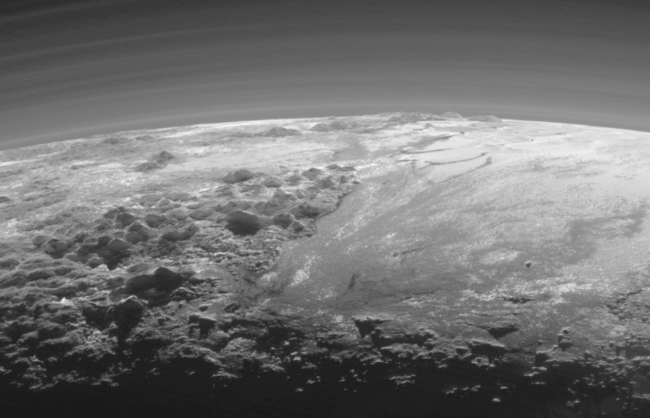
In the atmosphere of Pluto illuminated by the Sun, at least 12 separate layers are visible. The photograph shows the mountains of Norgay and Sputnik Plain, the width of the stage is 380 kilometers.
“This photo really makes you feel there, on Pluto, as if you’re exploring this frozen planet yourself,” said Alan Stern, lead researcher at the New Horizons team. “But it is also a gold mine for science, revealing new details about the atmosphere, mountains, glaciers and plains of Pluto.”

In this fragment of the photo, a fog illuminated by the Sun or an atmospheric haze cut by parallel shadows from hills and small mountains can be seen. The image width is 185 kilometers.
“Besides the fact that these images of Pluto are breathtaking, they tell us a lot about the weather in this world: the atmospheric haze lying in the lowlands speaks of frequent changes in the weather - in this respect, Pluto is very similar to Earth,” says Will Grandi, one of the members New Horizons teams.
Considering the photographs of Pluto previously obtained, everything speaks of the presence of a “hydrological” cycle on Pluto, very similar to the terrestrial one — with soft and exotic ices, including nitrogen, instead of water ice.
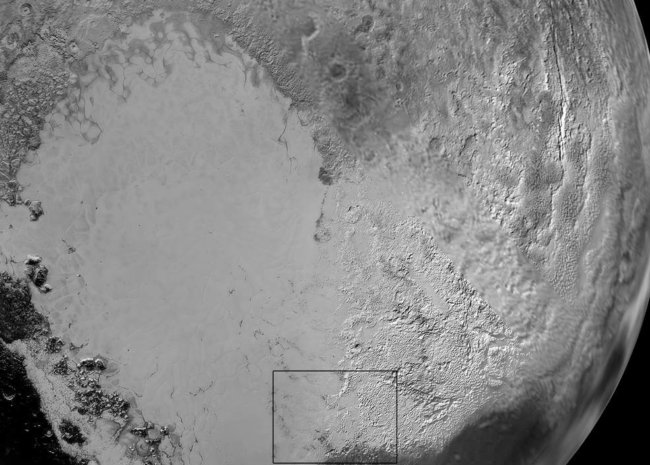
The photograph shows the plain of the Satellite - a smooth light region on the surface of Pluto. The rectangle highlights the location of the glacier from the following photos.
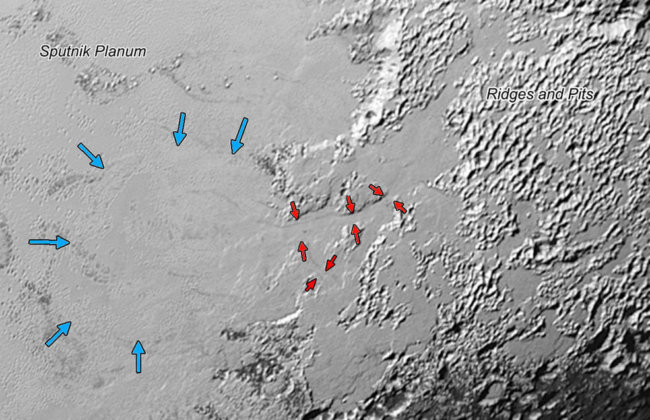
Ice (most likely nitrogen), gathered on a hill in the right side of this image, flows down from the plutonian mountains to the plain of Sputnik through the 3-8 km wide valley marked with red arrows. The front borders of the ice moving deep into the Sputnik plain are marked by blue arrows. The origin of the ridges and pits on the right side of the image remains unknown.
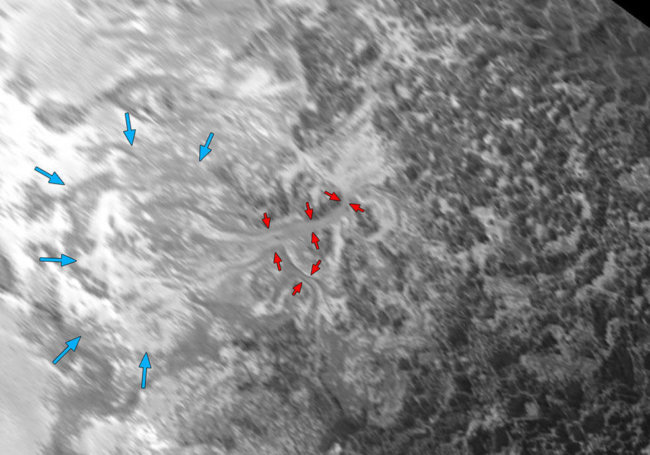
“We didn’t expect to see traces of the glacial cycle on Pluto,” said Alan Howard, a geologist at the New Horizons mission. “Driven by dim sunlight, this cycle can be directly compared with the hydrological cycle that feeds the snow caps of the mountains of the earth, where water evaporates from the oceans, falls as snow and returns to the oceans as glaciers descend from the mountains.”
“It's amazing how Pluto looks like Earth in this respect,” added Alan Stern. “No one could have thought of that earlier.”
Based on nasa.gov
The article is based on materials .
- Get link
- X
- Other Apps
Comments
Post a Comment